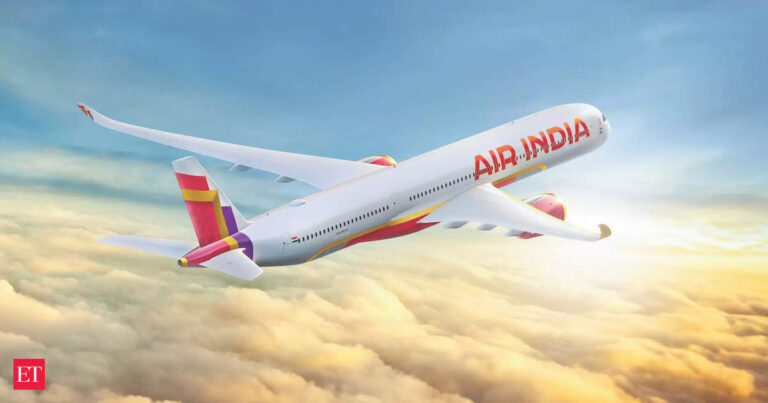“This is not a product that will be retired. Many of the leading airlines are developing next-generation first class products. We are not alone in doing so. I feel like there’s some opportunity to ‘Well,’ he said at a media briefing earlier this week.
Air India currently has 202 aircraft in its fleet, including 67 wide-body aircraft. Of these, 27 are B777s and 40 are B787s.
Of the 67 widebody aircraft, all legacy B777s and some leased B777s have first class seats.
“To compete with the best airlines, you need first class. This is an ambitious product and will determine how airlines are run and built…We are bringing it to the A350-1000 aircraft. Equipped with… some of them are products.
“Product development takes time,” Agarwal said. Large widebody aircraft (A350-1000 and B777X) have 325 to 400 seats. These aircraft are expected to be introduced within the next few years, with the A350-1000 expected to be introduced within the next two years. “For an airline to grow, it’s important to have that product (first class)… It’s going to be mainly big cities. London, New York are good markets for first class. Even if you have a private jet. , you can’t get on a plane.” With a first class product, you can get there faster on a direct flight. ” he said.
Air India has three other widebody aircraft. medium-sized widebody aircraft (A350-900 and B787-9) with 300 to 325 seats, and small widebody aircraft (B787-8) with 250 to 300 seats.
Widebody upgrades will begin this year, starting with the Boeing 787, and the upgrade of 27 legacy Airbus 320 neo aircraft is expected to be completed by mid-2025.
Air India serves approximately 63 million passengers, most of whom fly domestically or on short-haul international flights. These flights will be operated by narrow-body aircraft.
New and improved products are coming to almost all of Narrowbody, which serves nearly 80 percent of its customers. Mr. Agarwal said better products will be available by the second half of this year.
Legacy boeing 777 aircraft
Some of the legacy Boeing 777s, which are primarily used for ultra-long-haul flights to countries such as Canada and the United States, have experienced multiple delays, cancellations and technical issues.
While Agarwal acknowledged that the previous Boeing 777s are not performing as well as expected, he said the company has more of a buffer than before.
Air India has a fleet of 27 Boeing 777 aircraft, including 16 legacy aircraft.
“We monitor it monthly and once we have confidence in the performance of the aircraft, we will leverage it further. Until we have that confidence, we will continue to monitor the deployment to some extent in case the aircraft crashes. “We are leaving a buffer of “alternatives available that can sustain flight,” he said.
Asked whether a reduction in the traditional Boeing 777 fleet would mean fewer ultra-long-haul flights, Agarwal said, “We will maintain whatever we have. We are not going to reduce it.”
He also said whether airlines add more flights “depends on whether they can get more performance out of their existing fleet or whether they can acquire more aircraft.”
Refurbishment of legacy Boeing 777 aircraft is expected to begin early next year.
wide body plane
Replying to a question on whether Air India is considering dry or wet leasing for its aircraft, Agarwal said the airline is looking for capacity and is looking to bring wide-body aircraft to market. He added that it is very difficult.
“Whenever you take this much widebody capacity out of the market, you always end up with older products. also have their own challenges,” he said.
He expressed his hope to begin acquiring the aircraft he ordered, adding: “…we will never say no to a good aircraft.”
Agarwal said the airline is not currently considering wet-lease aircraft.
“We’ll start receiving widebodies this year, and we’ll have more from next year,” he said.
However, he did not provide a clear figure, saying, “I don’t think OEMs (original equipment manufacturers) know what they can offer yet.”
Currently, Air India has a total of 67 widebody aircraft, including 27 Boeing 777s, 34 Boeing 787s, and 6 A350s.
Loyalty programs and corporate travel
Agarwal said the entire enterprise offering and pricing has been revamped. The airline is also in talks with businesses on how to meet their needs holistically, and “with the Vistara merger, that number will improve even further thanks to the ring fencing and experience we have implemented on inter-metro lines.” said. “The situation now is much better than before the merger,” he said.
On metro lines, business traffic is about 25%.
Agarwal said a common group loyalty program involving Air India Express customers will be launched soon and the focus is on building strong partnerships.
Currently, the number of members of the loyalty program “Maharaja Club” exceeds 10.3 million.


